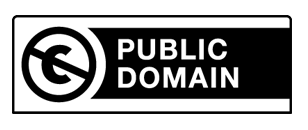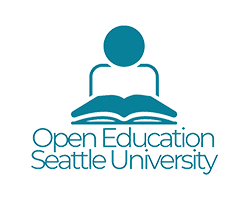Open Educational Resources
Learn more about Open Educational Resources (OER) and how you can incorporate more free instructional materials in your courses.
What is OER?
Open Educational Resources (OER) are teaching and learning materials — such as instructional videos, images and even simulations — that you may freely use and reuse at no cost.
Unlike heavily restricted copyright protected work ("all rights reserved"), OERs have been created by an individual or organization who choose to retain few, if any, rights. This done in the spirit of open, accessible education to create a better shared humanity.
Open Education at Seattle U
As part of Seattle University's Reigniting our Strategic Directions, the Open Education Task Force explores opportunities for open education and open educational resources at Seattle University, identifies actions to support those opportunities and advocates for open education on campus.
Seattle University is also a member of the Open Education Network, an alliance of more than 1,750 colleges and universities working together to make education more equitable, affordable and accessible through the use of open textbooks.
Indicators of "Open"
When looking for free, open access content there are two primary indicators of the rights you have to use that work. Two of the most simple and powerful indicators are the Creative Commons licensing system and all works in the Public Domain.

Creative Commons are a set of simple copyright licenses built with the inherent notion that knowledge should be shared freely and openly around the world. Read about Creative Commons Licenses and use the resources below to find free content for your courses.

All works published before 1923 are automatically in the public domain, meaning you can use them however you like. Works published after 1923 are a little more complicated. Check in with your Liaison Librarian to evaluate individual works.
Open Educational Resource Finders
There are many websites dedicated to helping you find freely available resources for building course materials, activities and assessments. Click on any of the links below for more information.
Entire University Courses
Activities & Assessments
Online Animations & Simulations
Instructional Images and Videos
Open Books & Journals
Course material costs (particularly books) are uniquely burdensome to university students and disproportionately affect first-generation and ethnic minority students (including here at Seattle U). One significant opportunity we have to reduce student costs is to utilize open books and journals. Here are some resources you can explore to search for open books and journals:
- Directory of Open Access Books (DOAB)
- Directory of Open Access Journals (DOAJ)
- LibreTexts
- OpenStax
- Open Textbook Library
- BC Open Collection BCcampus
Free Images (videos and music too!)
In addition to the freely available resources explicitly shared for teaching and learning, you may also be looking for open access content (images, videos and music) that you are free to use in your course materials. Check out the Lemieux Library's Guide to Finding and Using Images.
- Creative Commons Search is arguably the most powerful tool, as it brings together many different websites for your search.
- The article "Stock photos that don't suck" on Medium has a list of freely available (and artistically rich!) photos that you can use in your course content.
- The Flickr gives you a way to search for Creative Commons licensed photographs.
- Google Images allows you to search for images while filtering for usage rights. To do this, type in your search word(s), choose Images, then Tools, then Usage Rights, then select "Creative Commons licenses."
- A few other options include:
Seattle University Services
Some of the most knowledgeable people on campus who are ready and waiting to help you find free content for your classes are our wonderful Library Liaisons. Check out the SU Library OER Guide and reach out to your liaison.
The Copyright Policy Coordinator is a fantastic resource on campus for determining public domain or the copyright status of any work you might have.

